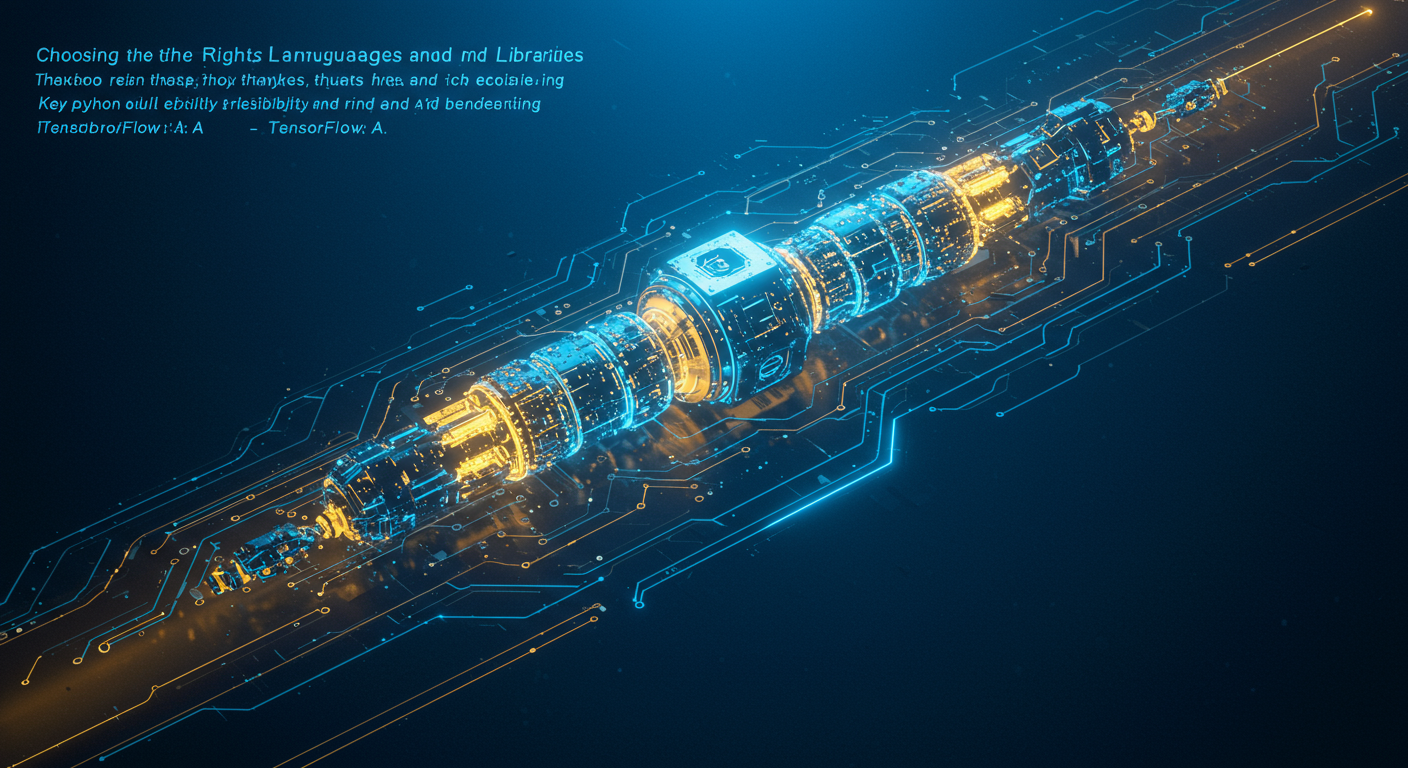Enterprise AI Benchmarking: A Practical Guide to Evaluating Rule-Based LLMs and Hybrid Agent Systems

Introduction: The Imperative of AI Benchmarking in the Enterprise
In the fast-evolving landscape of enterprise AI, blindly adopting generic benchmarks is akin to navigating uncharted waters with an outdated map. To truly harness the power of rule-based LLMs and hybrid agentic AI systems, we need precision tools—custom, task-specific benchmarks that reflect the unique challenges and opportunities of our business.
Why Generic Benchmarks Fall Short
Public datasets like GLUE and MMLU are valuable, but they rarely mirror real-world enterprise scenarios.
- Lack of Context: These benchmarks often test general knowledge or language understanding, failing to evaluate AI's performance on industry-specific tasks.
- Unrealistic Data: The datasets may not accurately represent the type or volume of data encountered in a business environment.
- Misaligned Goals: Generic benchmarks can reward models optimized for broad capabilities, not the specific, nuanced performance required in enterprise applications.
The Rise of Rule-Based LLMs and Hybrid Agentic AI Systems
- Rule-Based LLMs: These models combine the power of large language models with predefined rules and constraints for structured output.
- Hybrid Agentic AI Systems: Integrating multiple AI agents with varying skills to accomplish complex tasks, these systems are becoming crucial for automating intricate workflows. See how multi-agent systems are revolutionizing cyber defense.
The ROI of Robust AI Benchmarking
Investing in custom AI benchmarks yields substantial returns.
- Improved Performance: Pinpointing weaknesses and optimizing models for specific tasks leads to measurable gains.
- Better Decision-Making: Providing accurate, data-driven insights empowers leaders to make informed choices about AI investments.
Crafting a robust enterprise AI benchmarking framework demands a structured approach, ensuring that your Large Language Models (LLMs) and hybrid agent systems truly deliver business value.
Identifying Critical Business Tasks
Begin by pinpointing the business tasks and use cases crucial for AI evaluation. This involves asking:
- What are the most pressing challenges AI can address?
- How can AI improve existing workflows?
- For example, if customer service is key, focus on tasks like:
- Automated query resolution
- Sentiment analysis
- Personalized recommendations. Tools like ChatGPT can help automate communication and improve customer interactions.
Defining Relevant Performance Metrics
Next, nail down the performance metrics:
- Accuracy: How often does the AI provide correct results?
- Latency: What is the response time?
- Cost: What are the operational expenses? Consider tools like those for pricing intelligence to optimize cost-effectiveness.
- Scalability: Can the AI handle increasing workloads?
- Security: How well does the AI protect sensitive data?
Creating a Diverse Dataset
Assemble a dataset that mirrors real-world scenarios:
- Include edge cases
- Address potential biases.
- For instance, if evaluating an AI writing tool, ensure the dataset contains diverse writing styles and topics. You might consider tools covered in "AI Writing Tools in 2025: Storychief vs Jasper vs CopyAI – Which Reigns Supreme?" to see how different models perform on diverse inputs.
Developing Scoring Rubrics and Evaluation Criteria
Create rubrics that clearly define success for each metric, making evaluation objective and consistent.
Setting Baselines and Objectives
Establish baseline performance levels using existing systems or simpler models:
This provides a reference point for measuring improvement and setting realistic target objectives.
Evaluating rule-based LLMs and hybrid agent systems effectively requires a comprehensive benchmarking framework targeting key business tasks with well-defined metrics. By following these steps, organizations can objectively measure and optimize AI performance for maximum impact.
Harnessing the power of AI for benchmarking demands a robust coding infrastructure.
Choosing the Right Languages and Libraries

Python reigns supreme here, thanks to its flexibility and rich ecosystem. Key python libraries for AI benchmarking include:
- TensorFlow: A powerful framework for numerical computation and large-scale machine learning.
- PyTorch: Known for its dynamic computation graph and ease of use, ideal for research and rapid prototyping.
- NumPy: Essential for numerical operations, especially when dealing with large datasets.
- Other notable libraries are Pandas, Scikit-learn, and specialized benchmarking tools like Bentoml, an optimizer, streamlining and benchmarking LLM inference.
Leveraging Cloud Infrastructure
Cloud platforms offer scalability and cost-effectiveness, vital for handling extensive benchmarking runs.- Cloud providers like AWS, Google Cloud, and Azure provide virtual machines, container services (like Kubernetes), and serverless functions.
- Utilizing cloud storage solutions (like Amazon S3) provides scalable and accessible storage for datasets.
- Cost management tools let you monitor spending and optimize resource allocation.
Implementing Data Pipelines
Effective benchmarking relies on quality data:- Data ingestion: Loading data from diverse sources (databases, files, APIs).
- Preprocessing: Cleaning, transforming, and preparing data for model consumption.
- Augmentation: Expanding the dataset to improve model generalization.
Automated Evaluation and Reporting
Automation is key to repeatable and reliable benchmarks:- Develop scripts to automatically run evaluations, collect metrics (accuracy, latency, etc.), and generate reports.
- Reporting dashboards visualize results, making it easy to identify bottlenecks and areas for improvement.
Version Control and CI/CD
Continuous Integration and Continuous Deployment (CI/CD) are important for iterative development and consistent results.- Integrating tools like Git version control helps manage changes and collaborate efficiently.
- Automated testing ensures consistent performance with every code update.
Large language models (LLMs) governed by specific rules promise consistent, explainable outputs, but how do we know they're delivering?
Understanding Rule-Based LLM Strengths and Limitations
Rule-based LLMs shine where adherence to guidelines is crucial, like in legal or financial applications. However:- They can struggle with nuanced, real-world scenarios that require creative problem-solving.
- The rigidity of rules can lead to outputs that feel unnatural or lack common sense.
Benchmarking Rule Adherence
Design benchmarks that actively test how well the LLM sticks to the defined rules. Consider:- Consistency: Does the LLM apply the same rule in similar scenarios?
- Explainability: Can you trace the output back to the specific rule that triggered it?
- Compliance: Is the LLM consistently adhering to any AI Legislation?
Handling Complex Reasoning
Rule-based systems must be able to navigate complexity:- Break down intricate logical tasks into smaller, manageable steps.
- Test the LLM's ability to handle nested rules and conditional logic.
Knowledge Base is Key
The quality of the knowledge base significantly impacts performance.- Ensure the knowledge base is accurate, comprehensive, and up-to-date.
- Measure how knowledge base changes influence the LLM's outputs, using
benchmarking rule based large language models.
Debugging and Optimization Techniques
Debugging is essential for consistent performance. Strategies include:- Implement detailed logging to track rule execution.
- Use Explainable AI (XAI) techniques to visualize decision-making processes.
- Test and refine rules iteratively based on benchmark results.
Explainability and Interpretability Considerations
Transparency builds trust. Ensure:- Clear documentation of all rules and their intended behavior.
- Mechanisms to trace the lineage of an LLM's output.
Assessing Hybrid Agentic AI Systems: A Holistic Approach
Hybrid agentic AI systems, combining the strengths of rule-based LLMs and other AI components, represent a leap towards more versatile enterprise solutions. But how do we ensure these complex systems are truly effective?
Deconstructing the Beast
Don't treat a hybrid agentic AI system as a monolith; break it down! Key components to analyze separately include:
- LLMs: Evaluate their raw language processing power, knowledge base, and reasoning abilities using metrics discussed earlier.
- Knowledge Bases: Are they accurate, up-to-date, and easily accessible to the agents?
- Planning Modules: Assess the effectiveness of these components in formulating and executing complex plans.
Evaluating Agent Interactions
The true magic (or mess) lies in how agents communicate. Focus on:
- Coordination Mechanisms: How smoothly do agents hand off tasks and data?
- Information Sharing: Is information transferred efficiently and accurately between agents?
Handling Uncertainty and Adaptation
Real-world environments are messy. A robust hybrid agentic ai system evaluation must include:
- Uncertainty Handling: How well does the system perform when faced with incomplete or conflicting data?
- Adaptability: Can the system adjust its behavior in response to changing conditions or new information?
- Learning from Experience: Is there a mechanism for the system to improve over time based on its successes and failures?
Addressing Emergent Behavior
Complex systems can exhibit unexpected behaviors.
- Actively probe for unintended consequences and emergent behavior.
- Implement robust monitoring to detect anomalies and potential problems early.
Case Studies: Learning from Reality
Examine real-world applications:
- Supply Chain Optimization: Did the system reduce costs and improve efficiency?
- Customer Service Automation: Did it improve customer satisfaction and reduce agent workload?
- Fraud Detection: How effective was it in identifying and preventing fraudulent transactions?
Pushing AI systems requires more than simple performance checks; it demands rigorous stress testing to identify vulnerabilities.
AI Model Stress Testing Techniques
Stress testing uncovers failure points, ensuring robust real-world performance:- Adversarial Attacks: Deliberately crafting inputs designed to fool the AI.
- Robustness Evaluation: Simulating unexpected events and disruptions to measure system resilience.
- Measuring Error Recovery: Assessing the system's capacity to bounce back from errors and maintain performance under stress.
- Long-Tail Keyword Application: Employing _AI model stress testing techniques_ in various scenarios to assess comprehensive performance.
Long-Term Reliability
Ultimately, advanced benchmarking, including AI model stress testing techniques, ensures our AI systems are not just intelligent, but also reliable under pressure, setting the stage for practical and trustworthy applications.Visualizing AI benchmarking reports distills complex data into actionable strategies for improvement.
Crafting Clear Reports
Creating clear, concise reports that resonate with stakeholders is paramount. Focus on highlighting key performance indicators (KPIs) and their implications.
- Use simple language, avoiding technical jargon.
- Structure reports with a clear narrative, guiding the reader through the findings.
- Include a summary of key insights at the beginning.
Visualizing Performance Trends
Effectively visualizing performance trends helps identify areas for optimization. Explore different visualization techniques.
- Line charts for tracking performance over time.
- Bar charts for comparing model performance across different metrics.
- Heatmaps for identifying areas where a model struggles.
Statistical Significance
Employ statistical analysis to discern meaningful differences between models. This goes beyond simply observing higher scores.
- Use t-tests or ANOVA to determine if differences are statistically significant.
- Report confidence intervals to convey the range of plausible values.
Data-Driven Recommendations

Translate your findings into data-driven recommendations for model selection, training, and deployment.
- Recommend the best model for specific use cases based on benchmarking results.
- Suggest training strategies to improve model performance.
- Guide deployment decisions based on resource constraints and performance requirements.
In conclusion, AI benchmarking report visualization helps to create insightful reports that effectively communicate findings to stakeholders and drive meaningful improvements in AI model performance. By focusing on clear communication, visualization of trends, and rigorous statistical analysis, you can transform raw data into actionable intelligence, ultimately guiding better model selection, training, and deployment strategies.
The future of AI benchmarking is rapidly evolving, promising greater automation and standardization but also presenting new ethical challenges.
Automated Benchmarking Platforms
Automated benchmarking platforms and services are streamlining the evaluation process. Imagine an AI tool that automatically compares different models like ChatGPT and Google Gemini, providing quantifiable performance metrics without manual intervention. This shift towards automation promises to democratize AI evaluation, making it accessible to a wider range of organizations.Standardized Benchmarks and Metrics
The AI community needs standardized benchmarks and evaluation metrics to ensure fair and consistent comparisons."Without common standards, comparing AI performance is like comparing apples to oranges, leading to confusion and potentially misleading results."
Standardized benchmarks can help in areas such as:
- Reasoning capabilities: As highlighted in the deep dive comparing Gemini Ultra vs. GPT-4, consistent metrics enable clearer understanding of AI progress.
- Coding assistance: Tools like GitHub Copilot and Tabnine require standardized testing to truly measure their efficiency gains.
Ethical Considerations
Addressing ethical considerations in AI benchmarking is critical, especially concerning fairness, bias, and transparency. Benchmarks themselves can perpetuate existing biases if not carefully designed and scrutinized. Ensuring fairness is paramount.Promoting Responsible AI
AI benchmarking plays a key role in promoting responsible AI development and deployment. It allows developers to identify and mitigate potential risks early on, fostering trust and accountability. Embracing explainable AI (XAI) principles can further enhance transparency, ensuring that AI decision-making processes are understandable and justifiable.As AI technology continues to advance, the 'future trends in AI benchmarking' will emphasize automation, standardization, ethical considerations, and promoting responsible AI development to ensure fair and reliable assessments.
Comprehensive AI benchmarking offers a strategic advantage, allowing businesses to navigate the complexities of rule-based LLMs and hybrid agent systems with confidence.
Key Benefits Recap
- Data-Driven Decisions: Benchmarking offers concrete data, moving beyond intuition in enterprise AI strategy best practices.
- Risk Mitigation: Identifying potential failures early minimizes costly deployments of underperforming AI.
- Performance Optimization:Pinpointing areas for improvement leads to optimized systems and better ROI.
Call to Action
Organizations should integrate AI benchmarking into their core enterprise AI strategy best practices, allocating resources for continuous evaluation. This proactive approach fosters innovation and ensures AI investments deliver tangible value.Resources for Further Learning
- Explore in-depth analysis of AI reasoning capabilities with a deep dive into Gemini Ultra vs GPT-4 to understand competitive performance.
- Learn more about optimizing LLM inference with the definitive guide to benchmarking and optimizing LLM inference using Bentomls.
Keywords
AI benchmarking, LLM evaluation, Agentic AI, Rule-based LLMs, Hybrid AI systems, AI performance metrics, Enterprise AI, AI model evaluation, AI testing, AI robustness, AI scalability, AI security, AI ethics, AI bias, Automated benchmarking
Hashtags
#AIbenchmarking #LLMevaluation #AgenticAI #EnterpriseAI #AItesting
Recommended AI tools
ChatGPT
Conversational AI
AI research, productivity, and conversation—smarter thinking, deeper insights.
Sora
Video Generation
Create stunning, realistic videos and audio from text, images, or video—remix and collaborate with Sora, OpenAI’s advanced generative video app.
Google Gemini
Conversational AI
Your everyday Google AI assistant for creativity, research, and productivity
Perplexity
Search & Discovery
Clear answers from reliable sources, powered by AI.
DeepSeek
Conversational AI
Efficient open-weight AI models for advanced reasoning and research
Freepik AI Image Generator
Image Generation
Generate on-brand AI images from text, sketches, or photos—fast, realistic, and ready for commercial use.
About the Author

Written by
Dr. William Bobos
Dr. William Bobos (known as 'Dr. Bob') is a long-time AI expert focused on practical evaluations of AI tools and frameworks. He frequently tests new releases, reads academic papers, and tracks industry news to translate breakthroughs into real-world use. At Best AI Tools, he curates clear, actionable insights for builders, researchers, and decision-makers.
More from Dr.

